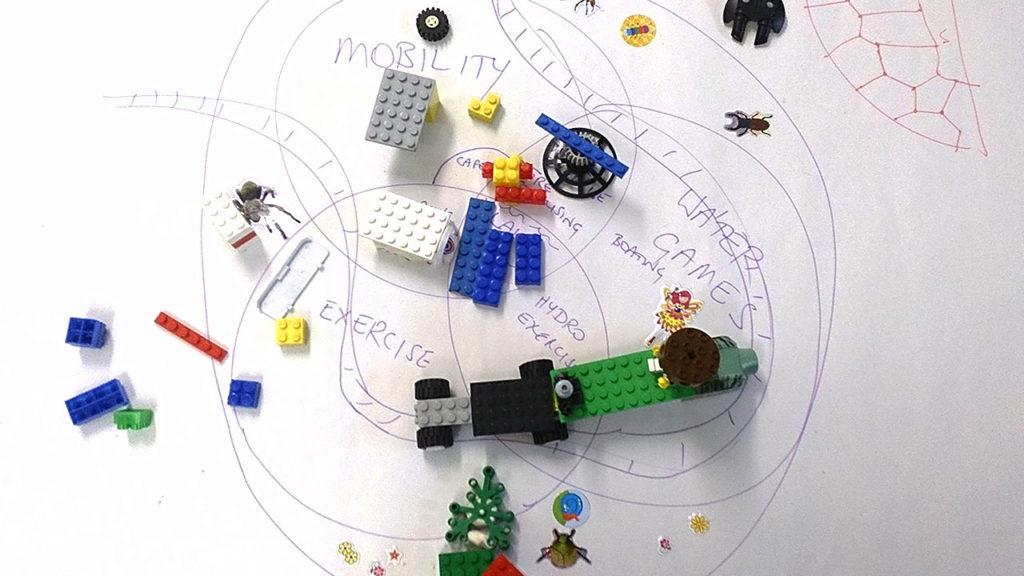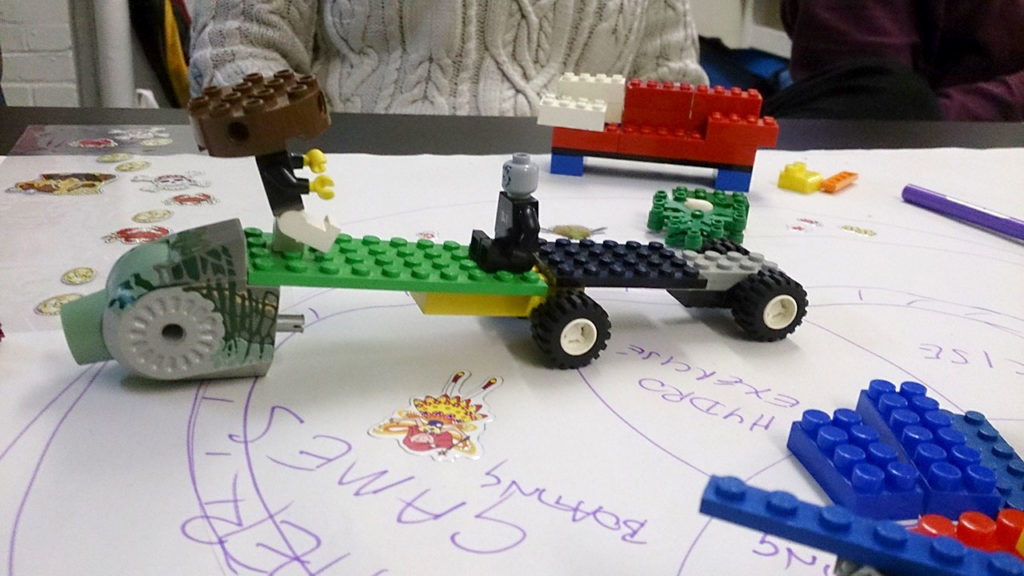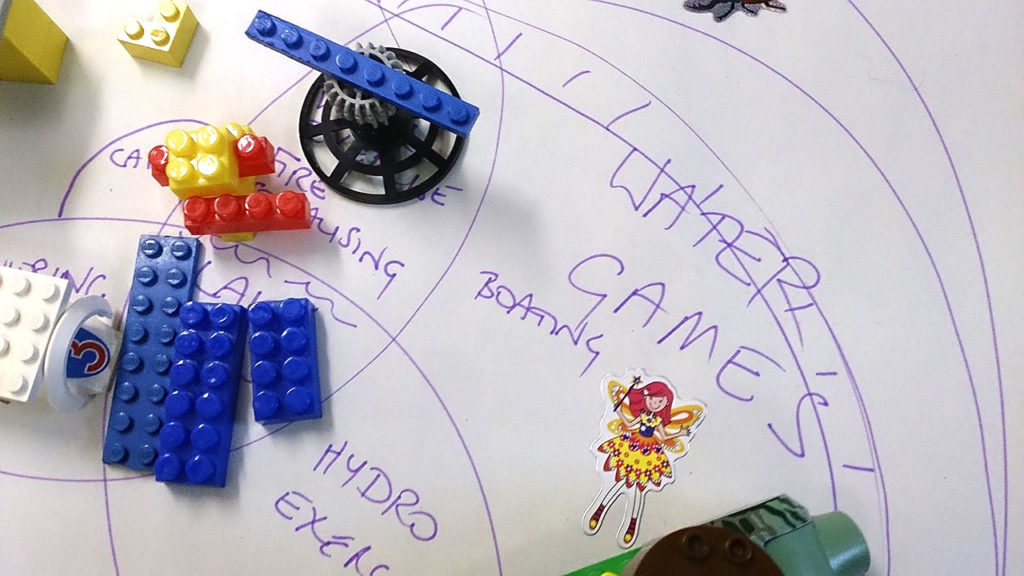



On a blustery cold and wet Sunday in the build up to Christmas I joined a group of people at Furtherfield Commons to discuss the future of Finsbury Park. I finally arrived after prowling around their darkened Gallery in the centre of the park, only to discover the event was being hosted in their other space in the far southeastern corner of the park. This brief detour gave me a moment to breathe in one of my local parks and I experienced a familiar feeling of vulnerability as the night drew in and cold drops of rain started to make themselves felt. The few brave families and exercisers were beginning to retreat as I crossed the open stretch of field that runs parallel to the roaring Seven Sisters Road. Drawn by the welcoming light coming from the building in the small gardens behind the legendary Rowans Ten Pin Bowling and guided by the sound of the drumming, a regular feature of this corner of the park, I entered the workshop and was greeted with mince pies, tea and other goodies, and met the 11 other workshop participants.
Timed to coincide with the 150th anniversary of Finsbury Park, this workshop for local residents, aimed to tap into our experiences and imaginations to generate future visions of the park. The event was led by Dr Rachel Jacobs, who is a local with a special affection for the park, and she started by sharing it’s stories and describing some of the features that are no longer in existence including a bandstand and the many trees that have been removed over the years.
We started by identifying features of the park that we would like to ‘lose’ and those we wanted to ‘protect’. Answers were varied but along similar themes. Many people shared a desire to preserve the trees and if possible, have more. The lake featured prominently with many people wanting to maintain the space and the sanctuary it provides for birds. Rose, one of my fellow workshoppers, gleefully called for those people who feed bread to the ducks to be poisoned.

The underground reservoir, a cathedral-like temple to water supply was hailed as a hidden gem that could be utilised as a space during the colder months by Polly a local resident and manager of Space4. Simon, Chair of Friends of Finsbury Park, suggested we consider uses for Manor House Lodge (another building that had escaped my attention). Zeki prioritised the the rocks in the park for protection – especially at the amphitheatre space beside the play park. There were wistful expressions of personal connections to conkers, squirrels and swans. The things that people wanted to lose were more elusive: the atmosphere that the park creates at night; its association with crime and a lack of safety. Gab who overlooks the park from his 8th floor flat, feels the park can be scary and in his words, sometimes ‘sly’. Removing the fences was suggested as a possible remedy.
Next, we were introduced to an initially bemusing process based on Play Your Place, designed by artists Ruth Catlow and Mary Flanagan, to introduce playful and game-like activities to public consultation. We were each asked to select different cards with random words that we were told would help us to disrupt our conventional view of problem solving. The cards were divided into provocative statements, for example mine were: ‘London is no longer’ and ‘getaway car’. Then a spinning wheel contained words associated with game features, like ‘mission’, ‘protagonist’, ‘goal’ or ‘reward’. After drawing or writing out our scenarios based on the random words we had to pick a segment of the wheel in which to place our ideas.

I asked if London is no longer, why is that so? Perhaps the park has eaten London. I was making the park the protagonist, the hero of the story. My ‘getaway car’ card prompted me to imagine Finsbury Park criss-crossed by many roads. So what if a part of the park could move very slowly, a moving park that people could take in the rest of the park from and jump on and off.
Zeki, one of the youngest participants had the cards ‘maps‘ and ‘someone caring for the park’ they assigned it the wheel word ‘reward’. He imagined the rocks in the park could become an area where people could come and paint and draw on the rocks. People will be able to look at the drawings and climb on the rocks. He said this suited ‘reward’ because you get a nice place.
Finally we worked with lego and plasticine, felt and coloured paper, to make a representation of our scenarios. Time flew by before we were then asked to talk about what we had created.
Simon and Talal ended up using a lot of lego. They said they weren’t that confident ‘creating’ but their riotous explosion of lego pieces described the Finsbury Park Lodge with lots of tropical trees growing around them. They included a clocktower which they felt the park needed. Ominously on the edge of their diorama there was, in their words: ‘the threat of a forest fire’.
Ilenia and Gab created intricate visions of the park modelled from tiny pieces of plasticine. Ilenia created crosses to represent all the buildings that she was going to destroy. She said “All the fences will be replaced by nice trees. The lake will be larger than it is now. There will be more people using the park.” Gab described the a tree as becoming “a colourful multi-form creator. It will be very friendly and very different from normal. Everything will be very colourful and this will be linked to representing climate change.” Emma who earlier in the workshop explained her love of conkers ended up building robot conkers.

The outcomes were unexpected and realised in a wonderfully ad hoc way with a rich mix of ideas. Rachel and the Furtherfield team were on hand to support and provide more insight. Although the process of drawing cards and selecting from a wheel was initially quite perplexing, staying with the uncertainty of the process meant that we came up with ideas that were novel and unhindered by more formal or conservative notions of preserving or enhancing Finsbury Park. The two hour time limit, meant that everything moved along at pace that kept the idea generation restless. I believe I speak for all who took part in anticipating the results of the wider project.
What can possibly be made from such a kaleidoscope of raw material, I wondered on my way home in the pouring rain? Perhaps my plant car or Emma’s robot conkers will see the light of day or the darkness of the underground reservoir.
Futurescapes is an Innovate UK Audience of the Future Design Foundations project that uses Finsbury Park as a test case to examine the commercial potential for using immersive experiences as a tool for collaborative placemaking for public spaces and integrated public services. Furturescapes is a partnership project with Furtherfield, The Audience Agency and Wolf in Motion.